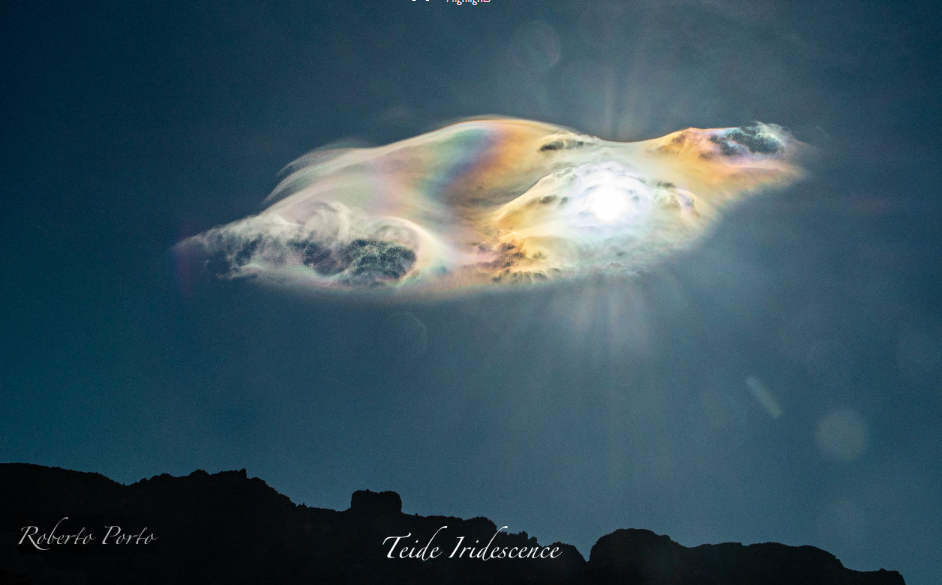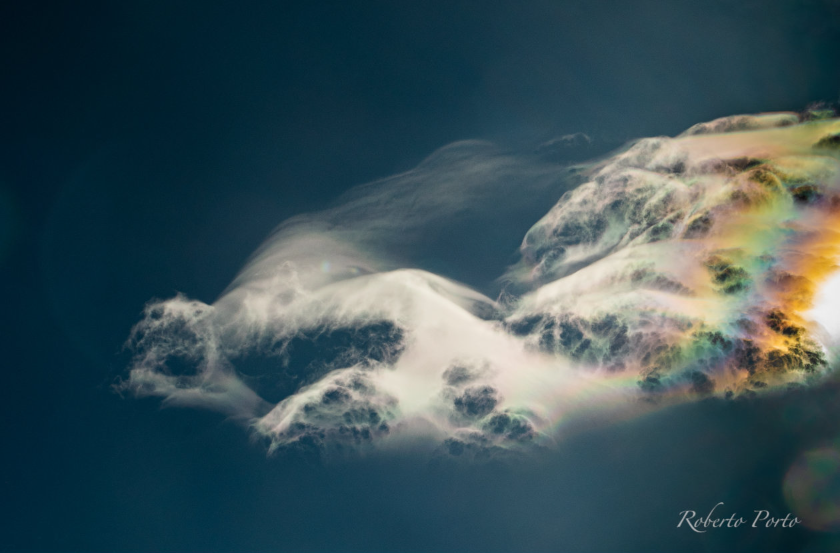Altocumulus lacunosis iridescence
Altocumulus Lacunosis Iridescence: A Mesmerizing Atmospheric Phenomenon
Altocumulus clouds are a common sight in the sky, characterized by their fluffy, mid-level altitude and wavy patterns. However, there is a rare and captivating optical phenomenon that occasionally occurs within these clouds, known as Altocumulus Lacunosis Iridescence. This mesmerizing display of colors adds an extra touch of magic to the already enchanting sky. In this article, we will delve deeper into this fascinating atmospheric occurrence, exploring its causes, characteristics, and the science behind its stunning visual effects.
Understanding Altocumulus Lacunosis
Altocumulus Lacunosis is a term used to describe a specific formation of altocumulus clouds that exhibits a distinctive pattern of irregular holes or gaps. These gaps can vary in shape and size, creating a latticework-like appearance within the cloud layer. It is within these openings that the iridescent colors manifest, producing a truly captivating sight for those lucky enough to witness it.
The Science Behind the Colors
The iridescence observed in Altocumulus Lacunosis is a result of a phenomenon known as diffraction. Diffraction occurs when light waves encounter an obstacle or aperture, causing them to bend and spread out. In the case of these cloud formations, the gaps act as tiny apertures through which sunlight passes. As the sunlight passes through these gaps, it undergoes diffraction, resulting in the separation of its different wavelengths.
The Spectral Show: Colors on Display
The diffraction of sunlight through the gaps in Altocumulus Lacunosis clouds leads to the separation of light into its constituent colors, creating a stunning display of spectral hues. The colors typically observed in this phenomenon include shades of blue, green, yellow, orange, and even red. These vibrant colors appear to shimmer and shift as the cloud formation evolves, adding a dynamic and ever-changing element to the sky.
The Rarity of Altocumulus Lacunosis Iridescence
While altocumulus clouds themselves are relatively common, the occurrence of Altocumulus Lacunosis Iridescence is considered rare. This rarity can be attributed to the specific combination of atmospheric conditions required for this phenomenon to take place. Factors such as the size and arrangement of the cloud gaps, the angle of the sunlight, and the observer's position all play a role in determining whether or not the iridescent colors will be visible.
Similar Optical Phenomena
Altocumulus Lacunosis Iridescence shares similarities with other atmospheric optics phenomena that also involve the diffraction of light. These include iridescent clouds, coronas, and glory. Iridescent clouds are characterized by their vibrant, rainbow-like colors and are often observed near or within cloud formations. Coronas are circular rings of colors surrounding the sun or moon, caused by diffraction through water droplets or ice crystals. Glories, on the other hand, appear as concentric rings of colors around a shadow cast on a cloud or fog layer.
Capturing the Magic: Photographing Altocumulus Lacunosis Iridescence
Photographing Altocumulus Lacunosis Iridescence can be a challenging yet rewarding endeavor. To capture the vibrant colors and intricate patterns, it is essential to use a camera with manual settings to adjust exposure and focus. Additionally, timing is crucial, as the iridescence may only last for a short period. Patience and a keen eye for detail are key when attempting to immortalize this magical atmospheric display.
Exploring Nature's Canvas: Awe-Inspiring Skyscapes
Altocumulus Lacunosis Iridescence serves as a reminder of the beauty and complexity of our natural world. The interplay between light, clouds, and atmospheric conditions creates an ever-changing canvas in the sky, offering us a glimpse into the wonders of nature. Observing and appreciating these atmospheric phenomena can be a source of inspiration and a reminder of the intricate forces at work in our environment.
An Invitation to Look Up
The next time you find yourself gazing up at the sky, take a moment to observe the clouds above. Within the vast expanse of the atmosphere, hidden wonders may reveal themselves. Altocumulus Lacunosis Iridescence is just one example of the many breathtaking optical displays that can occur in our skies. So, lift your eyes upward, embrace the sense of wonder, and let yourself be captivated by the mysteries unfolding above.




Note: this article has been automatically converted from the old site and may not appear as intended. You can find the original article here.
Reference Atmospheric Optics
If you use any of the definitions, information, or data presented on Atmospheric Optics, please copy the link or reference below to properly credit us as the reference source. Thank you!
-
<a href="https://atoptics.co.uk/blog/altocumulus-lacunosis-iridescence/">Altocumulus lacunosis iridescence</a>
-
"Altocumulus lacunosis iridescence". Atmospheric Optics. Accessed on November 26, 2024. https://atoptics.co.uk/blog/altocumulus-lacunosis-iridescence/.
-
"Altocumulus lacunosis iridescence". Atmospheric Optics, https://atoptics.co.uk/blog/altocumulus-lacunosis-iridescence/. Accessed 26 November, 2024
-
Altocumulus lacunosis iridescence. Atmospheric Optics. Retrieved from https://atoptics.co.uk/blog/altocumulus-lacunosis-iridescence/.